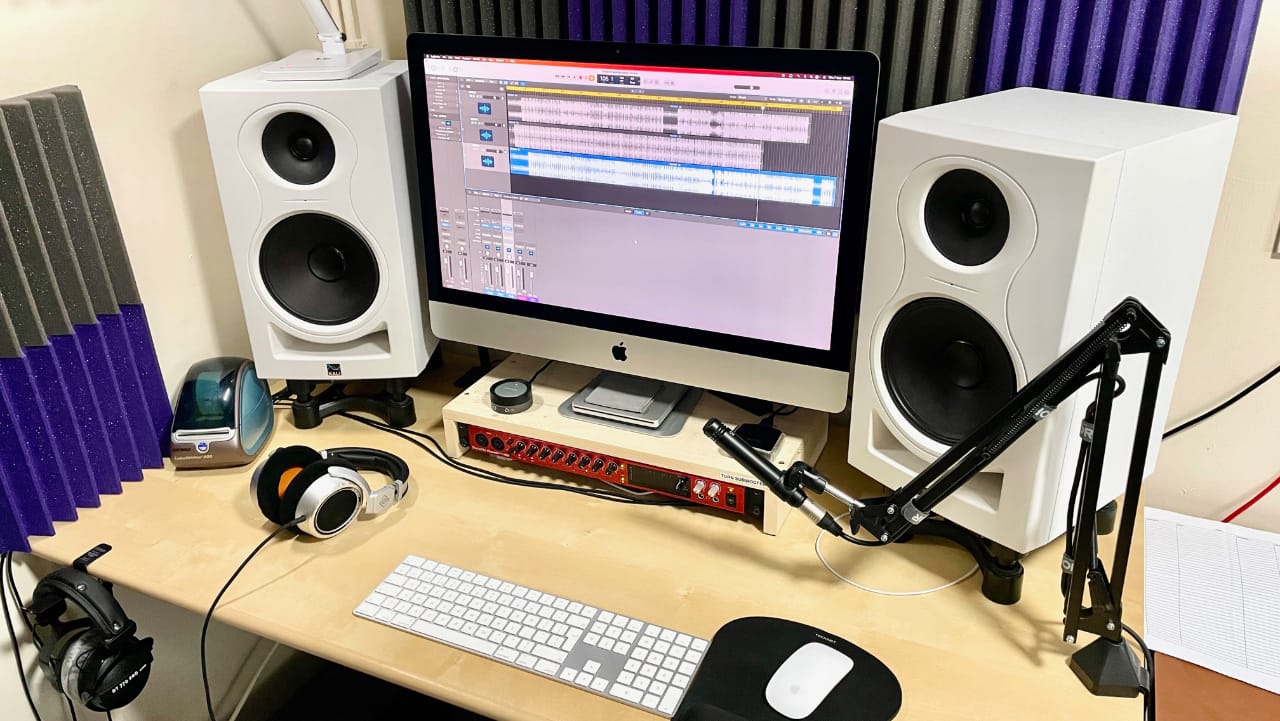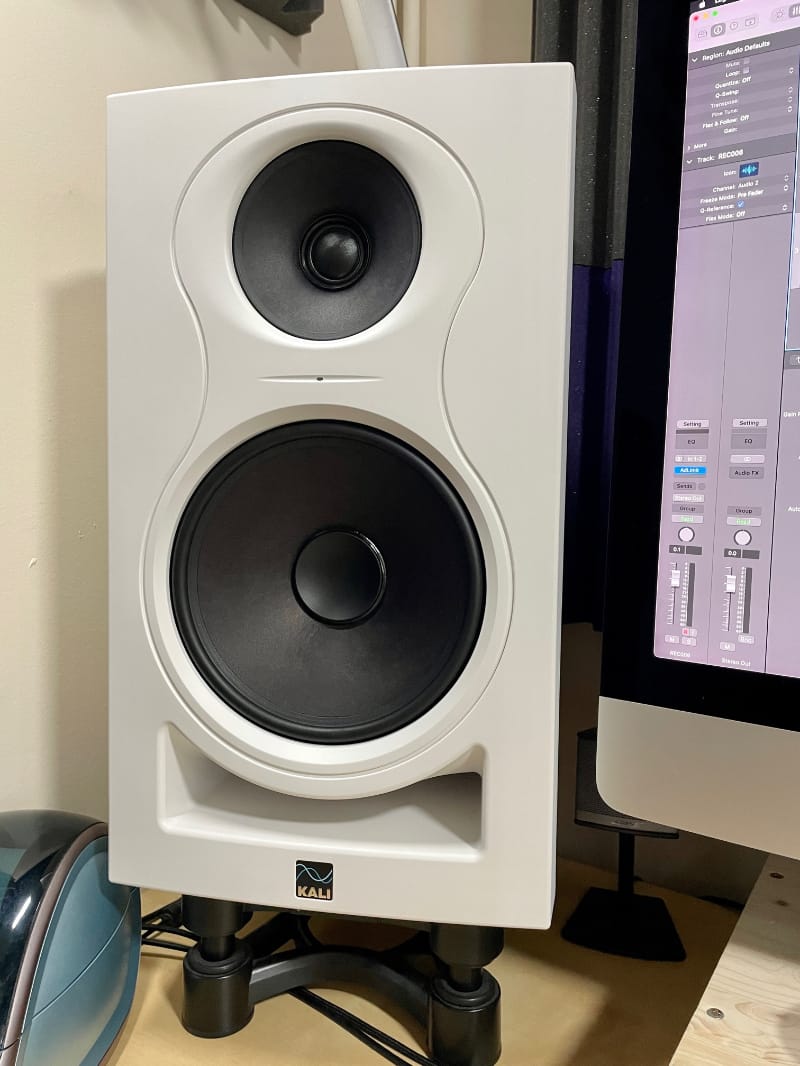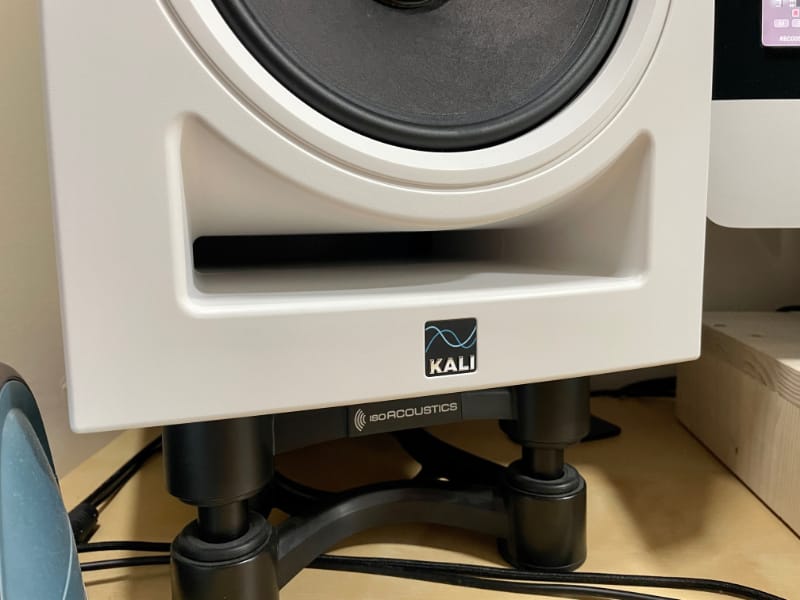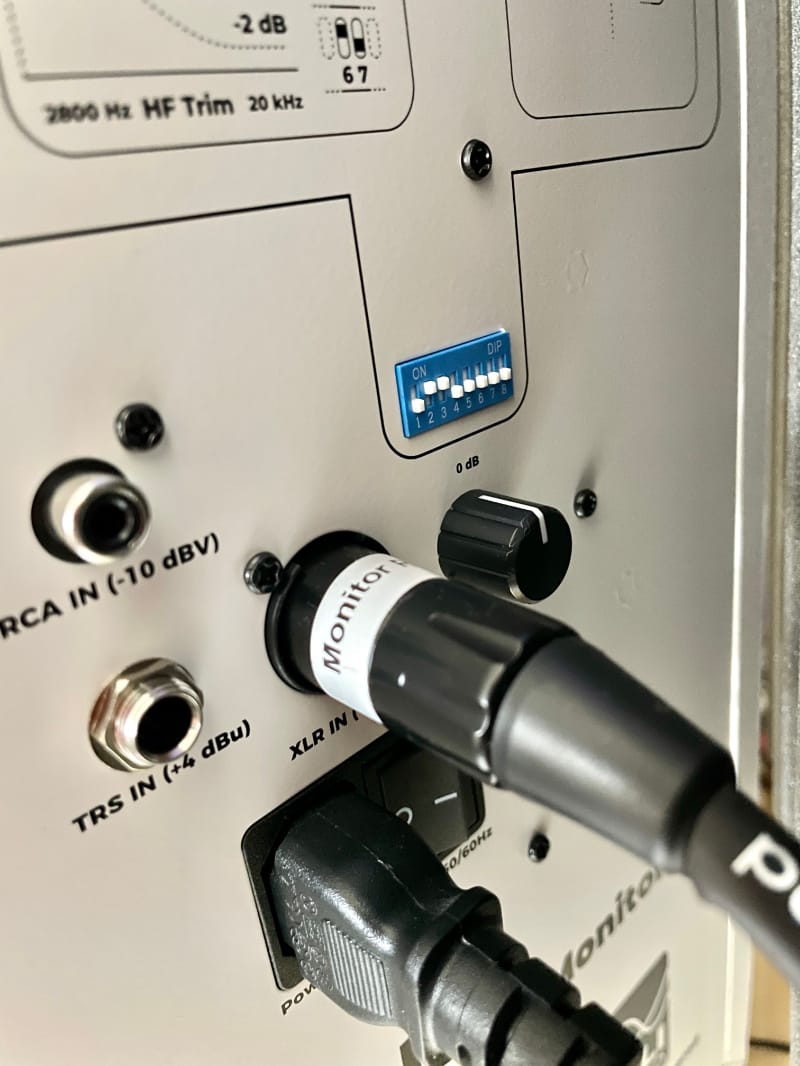
Nigel Cooper recently installed a pair of Kali IN-8 co-axial designed 3-way monitors in his home recording studio, and there’s now no going back.
Like many folks these days, I have a small home recording studio in my spare room, so I thought I’d share my thoughts on co-axial 3-way design near field monitors and the advantages that they have over the more typical 2-way models that are found in 99% of home recording studios.
Don’t get me wrong; there’s nothing wrong with 2-way design monitors – I’ve owned several budget pairs myself over the years: Adams A8X, Yamaha HS8, KRK Rokit RP8, to name a few, but when I plugged in a new pair of Kali IN-8 co-axial designed 3-way monitors there was a certain je ne sais quoi to the sound – they sounded more natural and open and both the stereo imaging and the perceived spacial locations of the instruments, regarding both the stereo field and the depth, were more obvious and placing the band members across an imaginary stage was easier to picture – or hear as the case may be.
Given the low price of these particular IN-8 monitors, the soundstage is quite incredible. I put this clear three-dimensional imaging down to the co-axial 3-way design.
The Second Wave

Also in black...
I owned the first generation Kali IN-8 monitors, but I’ve recently taken delivery of the ‘Second Wave’ version, which have had a few tweaks and changes over the original model. The second wave version has different bass and mid-range drivers – the previous model had a rubber coating on the speakers, whereas the new ones are a paper pulp type with a smooth sheen to them. Because of this, there’s now less physical material on the bass and mid-range drivers, so they have faster and more consistent transient responses. I also decided to get them in white this time as I found that my black IN-8s (given they house 8” bass drivers) yielded a somewhat gloomy working environment. My new white ones certainly brighten things up either side of my 27-in iMac.
The second wave IN-8 model has 12dB less self-noise than the first wave model, and the new ones also include a new, more robust DSP for smoother high-frequency tuning. Due to the new bass and midrange drivers, there’s also less total distortion. This latest IN-8 model has less than 0.3% distortion above 400 Hz. The first wave IN-8 had 1.1%, so a welcome improvement here.
Going back to the more common 2-way design monitor, again, there is nothing wrong with these, but you have to remember that the bass driver is trying to do two jobs at once: reproduce accurate bass while also trying to put across the mid-range of frequencies with clarity, which is scientifically impossible, at least if you want total accuracy between the bass, mids and upper frequencies. There will always be an audible compromise with a 2-way design monitor no matter who makes it; yes, that includes Genelec.
Pinpoint accurate stereo separation
A 3-way design, and more importantly, a duel-concentric design where the tweeter is mounted in the dead centre of the mid-range driver, yields pinpoint accurate stereo separation, superb sound staging, and very realistic imaging. Then there’s the time-domain benefits and off-axis response consistency that a duel-concentric design provides.

The letterbox-shaped front-firing port helps with bass extension
You’ll have noticed in the photos that the port hole is front firing, but, more importantly, it is an elongated letterbox shape, not circular. Ported monitor designs allow for deeper bass extension, but they are not without their problems. Rear firing ports can be affected by the wall directly behind them, which can have an adverse effect on the airflow, which, in turn, can alter the bass response in a negative way. A front-firing port can often be a better idea to avoid this, but round ports can still have issues. Hence, Kali, instead, opted for a letterbox-shaped front-firing port hole, which helps ensure that the air leaves the port at the same velocity and remains laminar, even at higher volume levels. All this results in a cleaner lower bass extension.

Micro-tuning with dip switches
The IN-8 also has a set of dip-switches on the back to allow for micro-tuning of the monitor depending on where it is positioned: on a stand, a desk, close to, or further away from a wall, for example. I’ll also point out that the Kali engineers visited several recording studio environments to fine-tune the dip-switches in the correct environments rather than simply using a computer model or calibration tool, so a considerable amount of time and effort has gone into designing these monitors.
Adjusting to the environment
My home recording studio is in a small room, which is far from ideal. My left monitor is in a corner while the right one isn’t – yikes! I’ve treated the room as best I can with acoustic treatment and set the dip switches on the IN-8 monitors to fine-tune them further. I’ve always said that the ‘room’ and its acoustics and treatment is the most important piece of equipment you can own, and compromised as my home studio is, the IN-8s have, thus far, been the easiest to set up and sound the best. Although not perfect, due to my room limitations, I know the negative sonic characteristics that my room has on my monitors and my ears are used to that fact and have adapted, so I know how to compensate with my mixing and mastering slightly.
Of course, as any good engineer should, I always check at various stages of my mix with my Neumann NDH30 headphones for a different perspective, which is especially important regarding any right-to-left panning effects. Kali is not the only company that makes 3-way design monitors or co-axial designs. Still, given they come in at just under $800 / €800 / £700 a pair, they certainly make moving over to a 3-way co-axial design well within reach for the home recording studio.
And once you’ve owned and experienced a pair of 3-way near-field monitors, it’s hard to return to a sonically compromised 2-way design.
Tags: Audio

Comments